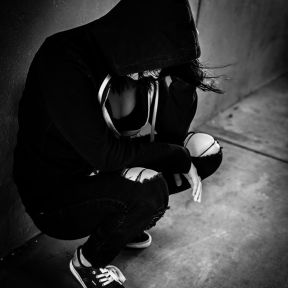Types of Depression
Depressed mood is a significant feature of other mental health conditions besides major depression. Many experts recognize four major types of depression: major depressive disorder, the depression of bipolar disorder, postpartum depression, and a low-grade, chronic depression known as dysthymia. Because of the array of symptoms, their timing, the multiplicity of causes, and the involvement of other body systems in depression, there are many lenses through which clinicians and researchers look at, classify, and treat the disorder.
Some experts believe that the clearest way of understanding depression is through its effects on metabolism—essentially whether it causes weight gain or loss, either way involving fundamental changes in the way body cells utilize glucose, the brain’s primary energy source. How depression is understood and classified is not just a matter of academic interest—it influences the approach to treatment and especially the search for new therapies for this often-treatment-resistant disorder.
On This Page

Postpartum depression, also known as postpartum disorder, is a form of major depression set off by the dramatic hormonal changes women experience in the weeks and months after childbirth, coinciding with the many lifestyle changes and demands that usually accompany new motherhood.
However, research shows that, 50 percent of the time, the mood shifts and anxiety that characterize postpartum depression actually begin during pregnancy; for that reason the condition is also sometimes called peripartum depression. Of the 3 to 6 percent of women who develop postpartum depression, a small number experience psychotic symptoms, such as command hallucinations ordering them to kill the baby. By contrast, up to 80 percent of women develop a relatively mild form of mood shifts after childbirth, the so-called baby blues, and the symptoms usually lift in weeks.
Bipolar disorder is marked by episodes of depression punctuated with episodes of mania, during which people feel euphoric and display intense excitement, frenetic activity, grandiosity, and, often, delusions. The condition bears features of both depression and schizophrenic disorders. And while the lows of depression are its most pervasive expression, it is the high of mania that seals the diagnosis of bipolar disorder, sometimes called manic depression.
What triggers the mood switch is usually not clear, but changes in circadian rhythms, whether internally induced by lack of sleep or externally imposed by changes in daylight exposure, is known to play an important role. The condition, although relatively common—it affects 2.6 percent of the U.S. population—is frequently misdiagnosed, especially in children.
Seasonal affective disorder, or SAD, is a type of recurring major depression kicked off by seasonal change—usually starting as days get darker and shorter in the fall and relenting in the spring. In a small number of people, the seasonal effect is the opposite: They experience the typical signs of depression during the spring or early summer with the extended period of daylight. Lethargy and oversleeping, or hypersomnia, are common features of winter SAD, along with weight gain; summer SAD is more often accompanied by insomnia, marked by the inability to fall or stay sleep. SAD is four times more common among women than among men and is far more common in northern states than in southern ones. Shortage of daylight, inability to produce vitamin D from sun exposure, and overproduction of the hormone melatonin (kicked off by the onset of darkness) are all implicated in SAD.
Approximately half of people with posttraumatic stress disorder also suffer from major depressive disorder. The two conditions share a number of symptoms, from depressed mood and sleep disturbance to concentration difficulties and feelings of guilt. But some experts now believe that the co-occurrence of major depression with PTSD reflects a distinct subtype of PTSD, as those with both conditions experience significantly impaired cognitive functioning, significantly impaired daily functioning, and are at greater risk for suicide than those with PTSD alone.
Evidence suggests that those most at risk for both PTSD and major depression have a history of childhood maltreatment, especially physical abuse. Neuroimaging studies indicate they may also have fewer nerve connections in brain circuits that process emotional memories.
Dysthymia, officially known as persistent depressive disorder, is a low-grade depression that lasts for periods of two years or more and recurs over the lifetime. It is less severe than major depression, but more chronic. Dysthymia may not prevent people from functioning day to day, but it robs them of feelings of enjoyment and pleasure, causes sluggishness and lethargy, and often results in weight gain. Depression is also commonly an accompaniment to cardiac disease, and there is evidence that it can both cause or exacerbate heart disease and result from it.
Depression can also occur in response to almost any other chronic ailment, because chronic illness usually forces twin challenges on people—to make adaptations to their self-concept and to make significant lifestyle adjustments that may curtail participation in once-enjoyable activities.














